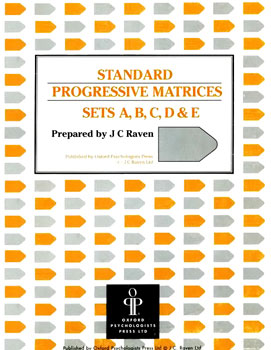Related Research Articles

An intelligence quotient (IQ) is a total score derived from a set of standardised tests or subtests designed to assess human intelligence. The abbreviation "IQ" was coined by the psychologist William Stern for the German term Intelligenzquotient, his term for a scoring method for intelligence tests at University of Breslau he advocated in a 1912 book.
Emotional intelligence (EI) is defined as the ability to perceive, use, understand, manage, and handle emotions. People with high emotional intelligence can recognize their own emotions and those of others, use emotional information to guide thinking and behavior, discern between different feelings and label them appropriately, and adjust emotions to adapt to environments.
Human intelligence is the intellectual capability of humans, which is marked by complex cognitive feats and high levels of motivation and self-awareness. Using their intelligence, humans are able to learn, form concepts, understand, and apply logic and reason. Human intelligence is also thought to encompass our capacities to recognize patterns, plan, innovate, solve problems, make decisions, retain information, and use language to communicate.
The Stanford–Binet Intelligence Scales is an individually administered intelligence test that was revised from the original Binet–Simon Scale by Alfred Binet and Théodore Simon. It is in its fifth edition (SB5), which was released in 2003.

David Wechsler was a Romanian-American psychologist. He developed well-known intelligence scales, such as the Wechsler Adult Intelligence Scale (WAIS) and the Wechsler Intelligence Scale for Children (WISC) to get to know his patients at Bellevue Hospital. A Review of General Psychology survey, published in 2002, ranked Wechsler as the 51st most cited psychologist of the 20th century.
The concepts of fluid intelligence (gf) and crystallized intelligence (gc) were introduced in 1963 by the psychologist Raymond Cattell. According to Cattell's psychometrically-based theory, general intelligence (g) is subdivided into gf and gc. Fluid intelligence is the ability to solve novel reasoning problems and is correlated with a number of important skills such as comprehension, problem-solving, and learning. Crystallized intelligence, on the other hand, involves the ability to deduce secondary relational abstractions by applying previously learned primary relational abstractions.
The Wechsler Adult Intelligence Scale (WAIS) is an IQ test designed to measure intelligence and cognitive ability in adults and older adolescents.
Cognitive tests are assessments of the cognitive capabilities of humans and other animals. Tests administered to humans include various forms of IQ tests; those administered to animals include the mirror test and the T maze test. Such testing is used in psychology and psychometrics, as well as other fields studying human and animal intelligence.
The Wechsler Intelligence Scale for Children (WISC) is an individually administered intelligence test for children between the ages of 6 and 16. The Fifth Edition is the most recent version.

Raven's Progressive Matrices or RPM is a non-verbal test typically used to measure general human intelligence and abstract reasoning and is regarded as a non-verbal estimate of fluid intelligence. It is one of the most common tests administered to both groups and individuals ranging from 5-year-olds to the elderly. It comprises 60 multiple choice questions, listed in order of increasing difficulty. This format is designed to measure the test taker's reasoning ability, the eductive ("meaning-making") component of Spearman's g.
The Wechsler Preschool and Primary Scale of Intelligence (WPPSI) is an intelligence test designed for children ages 2 years 6 months to 7 years 7 months developed by David Wechsler in 1967. It is a descendant of the earlier Wechsler Adult Intelligence Scale and the Wechsler Intelligence Scale for Children tests. Since its original publication the WPPSI has been revised three times in 1989, 2002, and 2012. The latest version, WPPSI–IV, published by Pearson Education, is a revision of the WPPSI-R and the WPPSI-III. It provides subtest and composite scores that represent intellectual functioning in verbal and performance cognitive domains, as well as providing a composite score that represents a child’s general intellectual ability.
The Kaufman Assessment Battery for Children (KABC) is a clinical instrument for assessing cognitive development. Its construction incorporates several recent developments in both psychological theory and statistical methodology. The test was developed by Alan S. Kaufman and Nadeen L. Kaufman in 1983 and revised in 2004. The test has been translated and adopted for many countries, such as the Japanese version of the K-ABC by the Japanese psychologists Tatsuya Matsubara, Kazuhiro Fujita, Hisao Maekawa, and Toshinori Ishikuma.
The Culture Fair Intelligence Test (CFIT) was created by Raymond Cattell in 1949 as an attempt to measure cognitive abilities devoid of sociocultural and environmental influences. Scholars have subsequently concluded that the attempt to construct measures of cognitive abilities devoid of the influences of experiential and cultural conditioning is a challenging one. Cattell proposed that general intelligence (g) comprises both fluid intelligence (Gf) and crystallized intelligence (Gc). Whereas Gf is biologically and constitutionally based, Gc is the actual level of a person's cognitive functioning, based on the augmentation of Gf through sociocultural and experiential learning.
The study of height and intelligence examines correlations between human height and human intelligence. Some epidemiological research on the subject has shown that there is a small but statistically significant positive correlation between height and intelligence after controlling for socioeconomic class and parental education. The cited study, however, does not draw any conclusions about height and intelligence, but rather suggests "a continuing effect of post-natal growth on childhood cognition beyond the age of 9 years." This correlation arises in both the developed and developing world and persists across age groups. An individual's taller stature has been attributed to higher economic status, which often translates to a higher quality of nutrition. This correlation, however, can be inverted to characterize one's socioeconomic status as a consequence of stature, where shorter stature can attract discrimination that affects many factors, among them employment, and treatment by educators. One such theory argues that since height strongly correlates with white and gray matter volume, it may act as a biomarker for cerebral development which itself mediates intelligence. Competing explanations include that certain genetic factors may influence both height and intelligence, or that both height and intelligence may be affected in similar ways by adverse environmental exposures during development. Measurements of the total surface area and mean thickness of the cortical grey matter using a magnetic resonance imaging (MRI) revealed that the height of individuals had a positive correlation with the total cortical surface area. This supports the idea that genes that influence height also influence total surface area of the brain, which in turn influences intelligence, resulting in the correlation. Other explanations further qualify the positive correlation between height and intelligence, suggesting that because the correlation becomes weaker with higher socioeconomic class and education level, environmental factors could partially override any genetic factors affecting both characteristics.

IQ classification is the practice of categorizing human intelligence, as measured by intelligence quotient (IQ) tests, into categories such as "superior" or "average".
Ammons Quick Test (QT) is an intelligence test that was designed in 1962 by Robert B. Ammons and his wife Carol H. Ammons. This test has been used for many years to help assess premorbid intelligence. It is a passive response picture-vocabulary test.
The Wechsler Individual Achievement Test Second Edition assesses the academic achievement of children, adolescents, college students and adults, aged 4 through 85. The test enables the assessment of a broad range of academics skills or only a particular area of need. The WIAT-II is a revision of the original WIAT, and additional measures. There are four basic scales: Reading, Math, Writing and Oral Language. Within these scales there is a total of 9 sub-test scores.
The following outline is provided as an overview of and topical guide to human intelligence:
The Wechsler Test of Adult Reading (WTAR) is a neuropsychological assessment tool used to provide a measure of premorbid intelligence, the degree of Intellectual function prior to the onset of illness or disease.

Verbal intelligence is the ability to understand and reason using concepts framed in words. More broadly, it is linked to problem solving, abstract reasoning, and working memory. Verbal intelligence is one of the most g-loaded abilities.
References
- ↑ Reber, Arthur S.; Allen, Rhiannon; Reber, Emily Sarah (2009). "The Penguin dictionary of psychology (4th ed.)". London, UK: Penguin. Retrieved 30 October 2018.
- 1 2 3 4 Tomkins, Silvan S.; Miner, John B. (1957). "The Tomkins-Horn picture arrangement test". Transactions of the New York Academy of Sciences. New York, Springer. 15 (2): 46–50. doi:10.1111/j.2164-0947.1952.tb01151.x. hdl: 2027/mdp.39015002395443 . PMID 13029129 . Retrieved 10 November 2018.
- ↑ Piotrowski, Z. (1958-01-01). The Tomkins-Horn Picture Arrangement Test. The journal of nervous and mental disease, 126(1), 106. doi : 10.1097/00005053-195801000-00016
- ↑ Bowler, Alida C. (August 15, 1917). "A Picture Arrangement Test". The Psychological Clinic. 11 (2): 37–54. PMC 5145029 . PMID 28909774.
- ↑ Kaufman, Flanagan, Alfonso, & Mascolo, Alan S., Dawn P., Vincent C., & Jennifer T. (2006). "Wechsler Intelligence Scale for Children, Fourth Edition (WISC-IV)". Journal of Psychoeducational Assessment. 24 (3): 278–295. doi:10.1177/0734282906288389. S2CID 5797204.
{{cite journal}}: CS1 maint: multiple names: authors list (link) - ↑ Thorndike, Edward L. (1920). "Intelligence and its uses". Harper's Magazine (140): 227–235. Retrieved 21 November 2018.
- ↑ Breiger, Boris (1956). "The use of the W-B picture arrangement subtest as a projective technique". Journal of Consulting Psychology (20(2), 132. ed.). 20 (2): 132. doi:10.1037/h0042186. PMID 13306842.